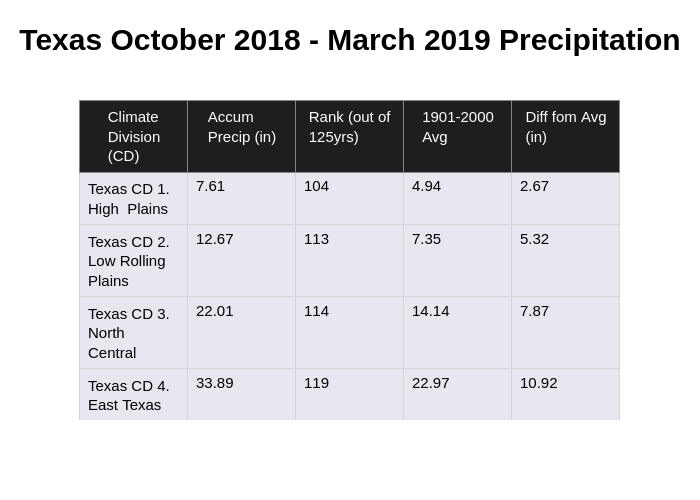Livestock Wx
2019 Texas Grazing Preview: Focus on the Panhandle and Rolling Plains
It’s finally April and we here at Livestock Wx are excited to finally say adios to winter and get ready for all the fun spring weather. In anticipation of the growing season, we thought it would be good to start a grazing preview for the major cattle producing states. This week, we’re starting with Texas and more specifically the Texas Panhandle and the Rolling Plains. We will add more regions and states in the coming weeks.
In some ways, the Panhandle and Rolling Plains are still recovering from last year’s drought, which clung to the region from the fall 2017 through spring 2018.
“I would say a resounding yes. The Panhandle is in much better shape now than they were then. They received a good rain last week [week of: March 25th] which further reduced their drought status. (see the comparison of the U.S. Drought Monitor below) Having said that, they can ALWAYS use more rain up there,” said Clark B. Neely, Ph.D., Assistant Professor and Extension Small Grains and Oilseed Specialist at Texas A & M AgriLife Extension.
Portions of the High Plains (around Amarillo, Texas) began drying out during the winter months, and Neely said some cattle were pulled off of wheat fields early, from limited moisture.
2019 Drought Flip-Flop

U.S. Drought Monitor for February 12, 2019

U.S. Drought Monitor for April 9, 2019
“The state of Texas; as a whole has started to trend drier as we enter into the spring,” Neely noted, “But subsoil moisture should still be excellent in most cases, except for portions of the High Plains that were drier earlier, and now areas where drought is creeping into Southwest Texas.” The below images show percent of average precipitation from October 1 to present and temperature departures from January to April that show the areas Neely is referring to.

Texas percent of average precipitation for October 1 – April 2019

Texas departure from average temperatures from Jan 2019 – April 2019
Looking at the precipitation by ranking from October 1 to March, we see a number of Texas Climate Divisions saw precipitation amounts that ranked in the top 100 years (out of 125). Exceptions were primarily in South Texas. For the Panhandle and Rolling Plains, October to March represents about 40% of the total annual precipitation so we still have a ways to go, but this is a good start.
April to July represents about 50% of annual precipitation so if the trends continues this could be a good sign for grass production this year.

Location of the 10 Texas Climate Divisions (CDs)
While the Panhandle has seen some late breaking rainfall, if we look at the 90-day evapotranspiration rates (the amount of moisture being evaporated from the plants and soil), we see higher than average rates in the Panhandle and Far West Texas. Evapotranspiration rates across the Rolling Plains have been about normal to below normal. Looking at evapotranspiration rates always completes the story even if it’s painful and checks our enthusiasm.
There is still a lot of precipitation ground to cover so this is just the beginning.
We will cover more regions of Texas next week and include another state or two from the Plains.

90-Evapotranspiration Rates (Jan-Apr) in inches (departures from the long-term average)
